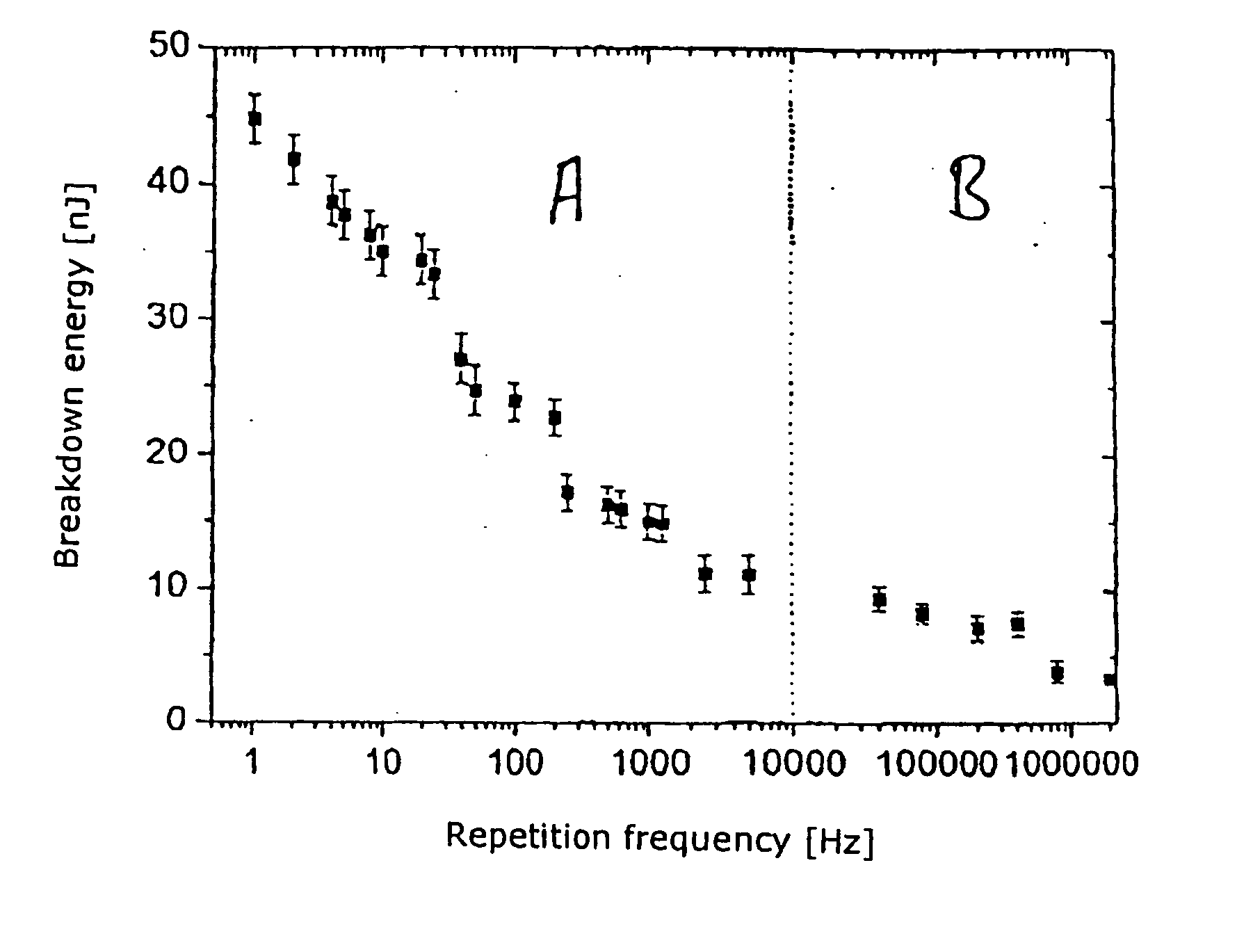Apparatus for and method of refractive surgery with laser pulses
- Summary
- Abstract
- Description
- Claims
- Application Information
AI Technical Summary
Benefits of technology
Problems solved by technology
Method used
Image
Examples
Embodiment Construction
[0092] Referring to FIG. 1 it can be seen from this diagram which in the region A was determined with a laser pulse duration of 150 fs, a wavelength of 780 nm and an aperture of 0.6 and in the region B with a laser pulse duration of about 15 fs, a wavelength of 800 nm and an aperture of 0.5, that, with a laser pulse repetition frequency of 1 Hertz, an energy of about 45 nJ is required to achieve material division. That required level of energy falls with an increasing laser pulse repetition frequency and reaches a value of below 5 nJ at a laser pulse repetition frequency of 1 MHz.
[0093]FIG. 2 shows the dependency of the laser pulse energy required for beginning a material division operation (‘beginning of the cut’) and the laser pulse energy at least required for continuing with the material division (‘breaking off the cut’) with the laser pulse overlap in the range of −100% to +100%. In that respect a negative pulse overlap signifies that between two adjacent pulses there remains ...
PUM
 Login to View More
Login to View More Abstract
Description
Claims
Application Information
 Login to View More
Login to View More - R&D
- Intellectual Property
- Life Sciences
- Materials
- Tech Scout
- Unparalleled Data Quality
- Higher Quality Content
- 60% Fewer Hallucinations
Browse by: Latest US Patents, China's latest patents, Technical Efficacy Thesaurus, Application Domain, Technology Topic, Popular Technical Reports.
© 2025 PatSnap. All rights reserved.Legal|Privacy policy|Modern Slavery Act Transparency Statement|Sitemap|About US| Contact US: help@patsnap.com



